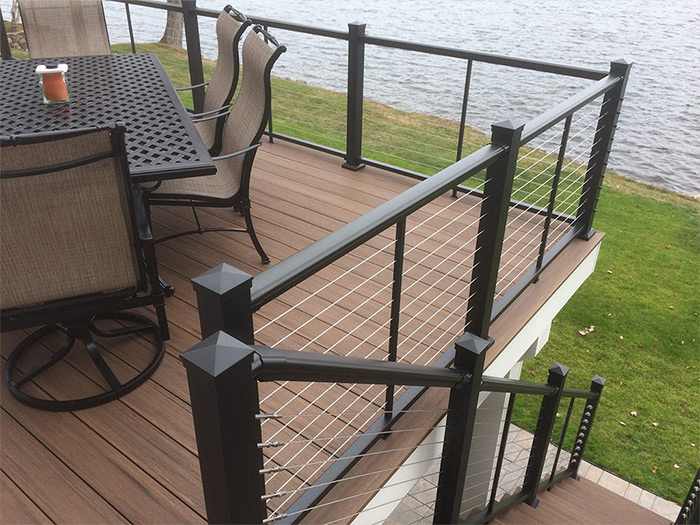This is a common question many people ask. Perhaps you’ve just learned of the many benefits of cable railing, or you’ve finally decided on your cable railing finishes. Now, you’re wondering whether you can cut costs by doing the installation on your own.
The short answer is – Yes!
Although professional installation should always be the first consideration, if you possess the skills and have a day or two to spare, you can install your railing system on your own.
But, there are a few points to keep in mind when installing cable railing yourself. These are the 5 things to consider if you choose to DIY your cable railing.
1. Type of railing
Not all cable railing systems are created the same. While some are simple to understand and easy to DIY, others are more complex and better handled by professionals.
Cable railing systems that require you to cut metal posts on-site and more, for example, are not ideal for DIY. For this reason, if you’d like to install your railing on your own, the first step is to find a railing system that’s easy to install. Atlantis Rail has a few products you should consider.
2. Your skill level
DIY cable railing installation is a lot easier if you’ve worked on home DIY projects before. It would be especially helpful if you’ve had experience with tools such as a drill, pliers, and measuring tape.
However, that doesn’t mean that you can’t DIY cable railing if you’re a complete novice. It just means that it may require more effort since you will be learning as you go. Begin by watching a couple of videos on cable railing installation and keep a few of these videos on hand to refer back to. You’ll find them very helpful during the actual installation. It would also help if you had a detailed user manual or guide and phone support. Atlantis Rail has installation instructions available for all their cable railing products. Ensure you thoroughly read through all instructions before starting your project.
3. Do you have the tools?
Since you’re considering a DIY approach, it’s likely that you already have a few handy tools, which is a great start. However, you’ll probably need a few additional and specialized tools for the installation process. A quick solution is to buy a matching cable rail installation kit alongside the cable railing system you choose.

4. Complexity of the project
Don’t confuse this with the complexity of the type of railing system. We’re assuming that you’ve already identified an easy-to-install railing system as your choice. Now, you need to deal with on-site challenges such as post arrangement and terrain.
This part, can get fairly complicated. Perhaps you desire unique level runs. Or, maybe you want to install the railing system on a concrete deck or a stairway. These are delicate jobs where one small mistake can prove costly in the end. You must remain open to professional opinions and advice under these circumstances, even if it is a DIY project.
5. Local code requirements
Finally, cable railing installation is guided by multiple codes, with local laws being most important. In the US, local codes are at the top, state codes next in line, national codes are third, and international codes are last.
You must be able to observe all your local cable railing installation codes. Otherwise, you risk lawsuits and fines. However, these are easily preventable by speaking with a local code official where there’s uncertainty. Be sure to check all code requirements before purchasing and starting on your cable railing DIY project.
Happy Cable Railing DIY
If you’re comfortable and in a position to meet all the above requirements, you’re ready to get the ball rolling on your DIY cable railing installation project. Now it’s time to measure your space and order your cable railing kit. Be sure to purchase quality cables from a reputable manufacturer so your cable railing lasts a lifetime.